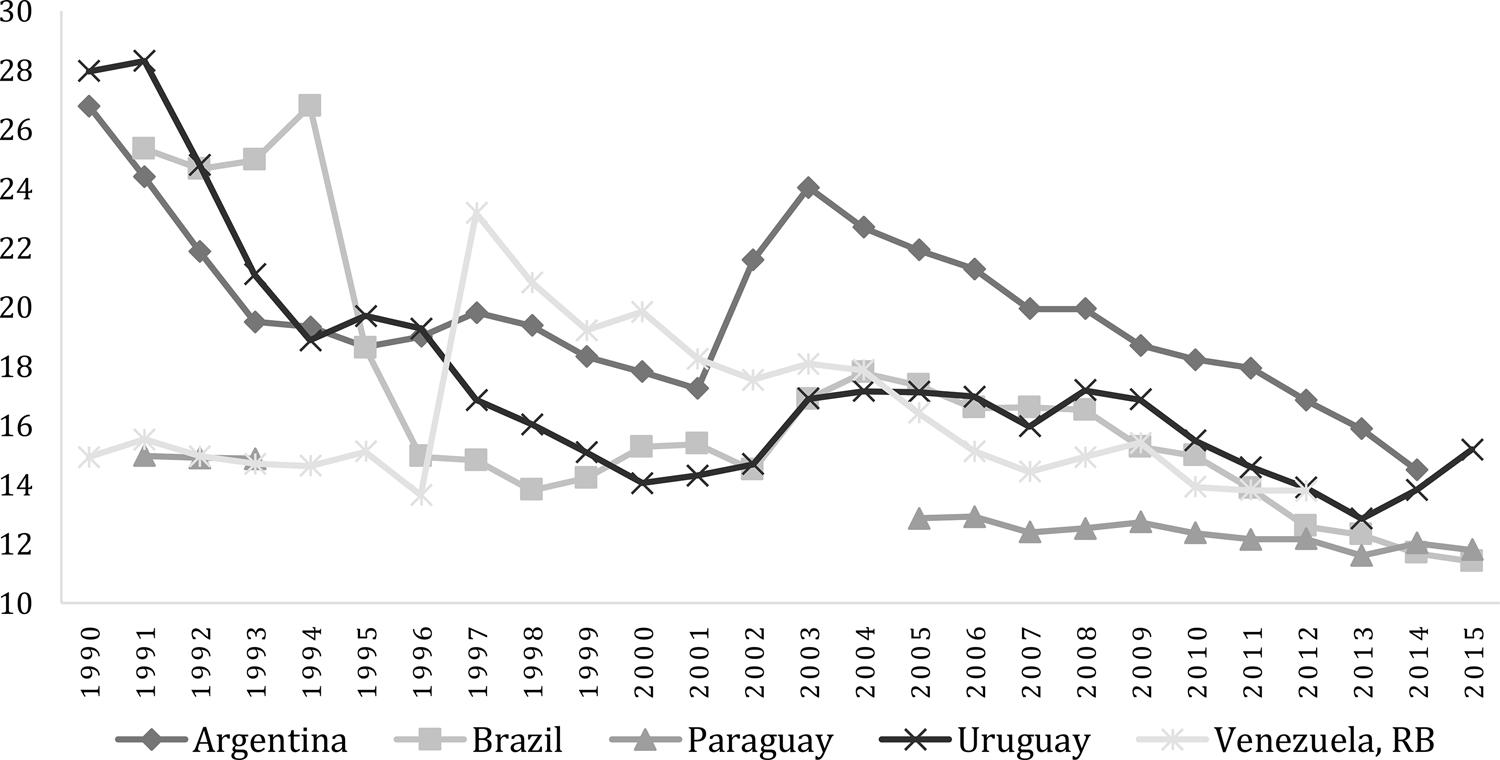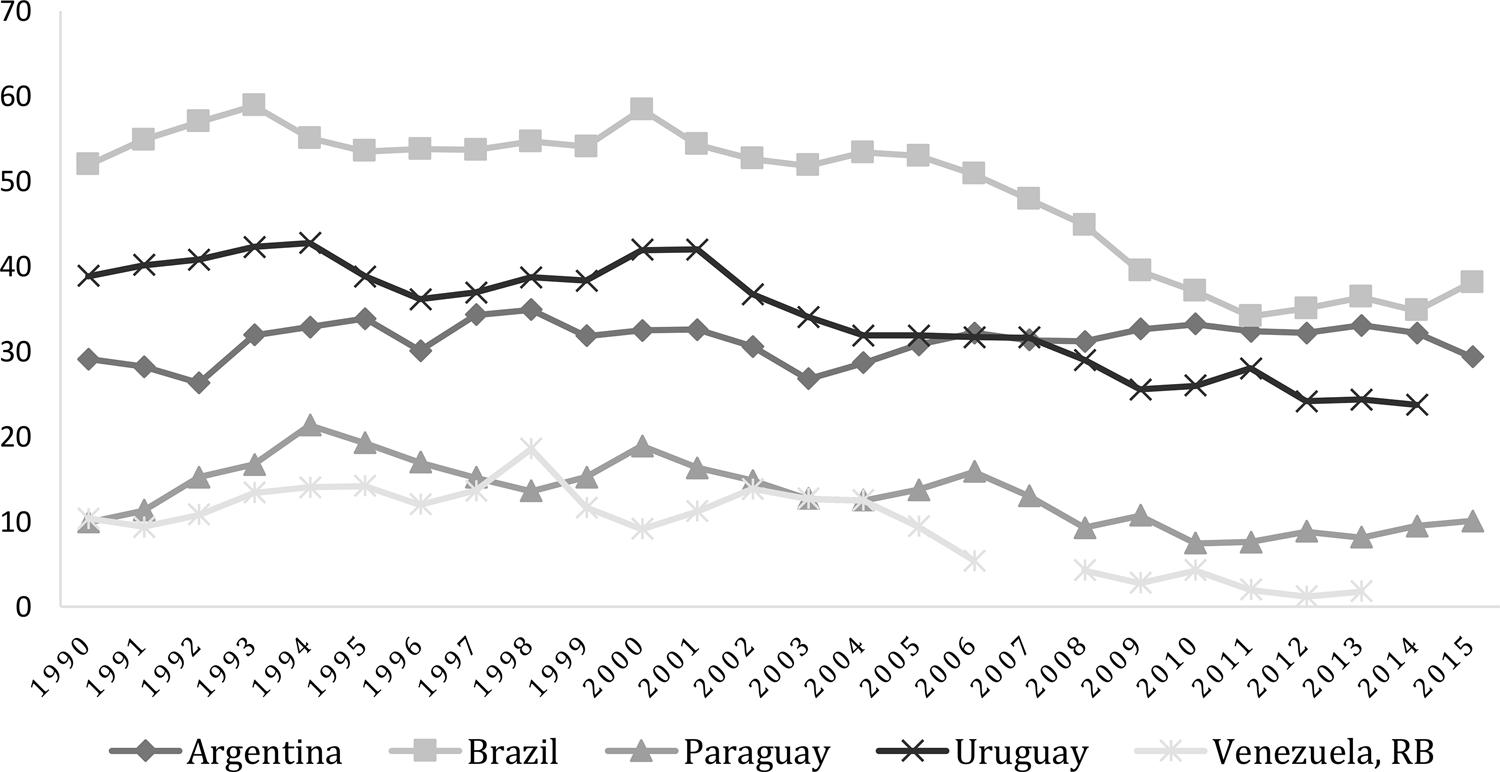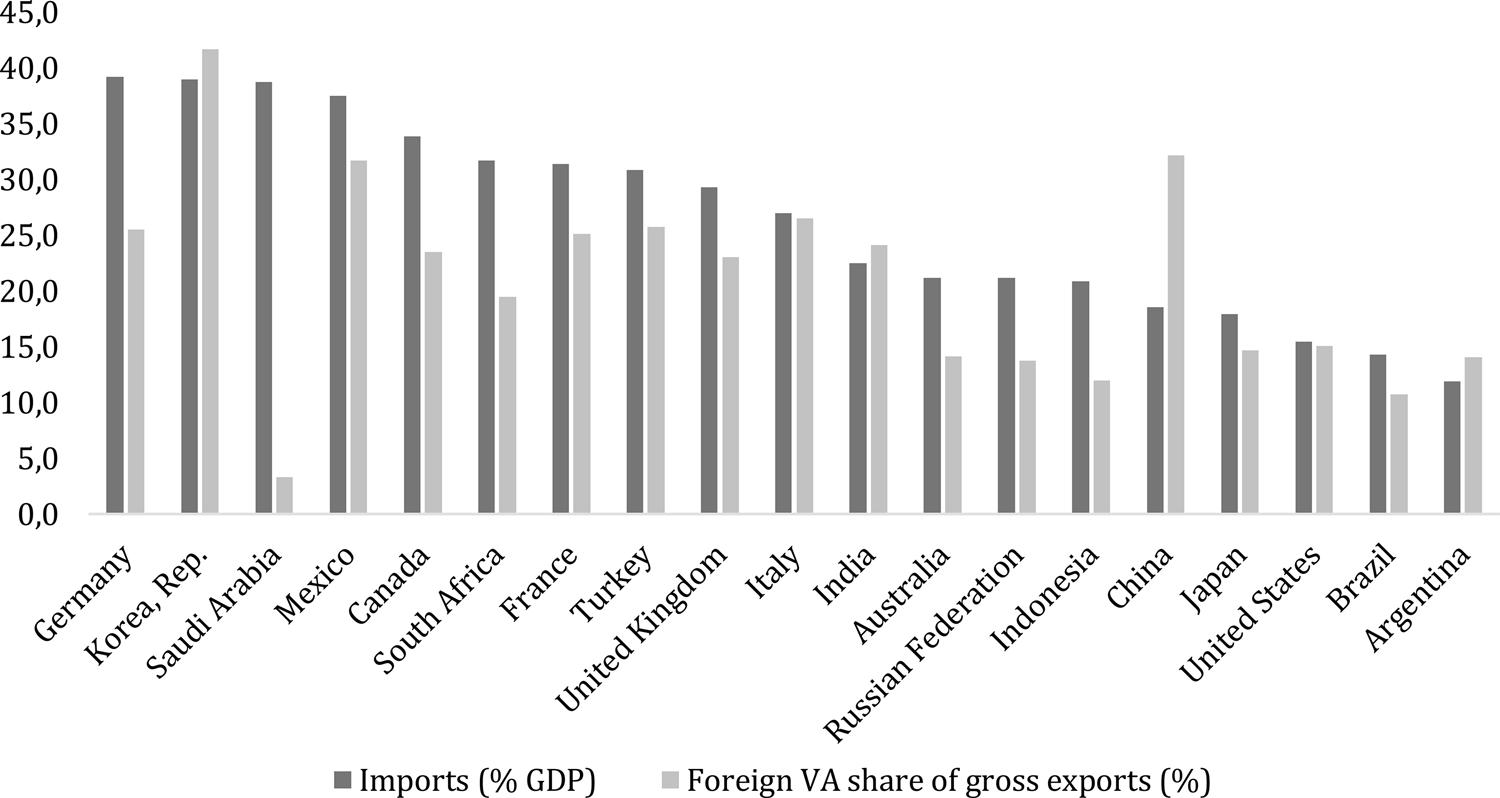Although integration has been a part of South American discourse for decades, the level at which it is actually promoted remains far from that which is observed in dynamic production and trading centers. Given transformations in global trade, the phenomenon of global value chains is, in fact, very regionalized. We ask whether the trading pattern of Mercosur countries is aligned with approaches based on regional value chain, and if not, how it differs and why. In our evidence and analysis, we primarily use traditional gross trade data and Trade in Value Added (TiVA) indicators, and we look more at countries' profiles. We show that there has been a decrease in Brazilian trade with Mercosur, with manufactured exports being the main reason for the decline. We indicate that, in addition to the effect of China in the 2000s, there has been a structural movement of Mercosur economies, mainly regarding Brazil, which supports a hypothesis of primarization or deindustrialization. Our results show that Brazil and Argentina are both relatively closed to foreign trade, as well as global and regional value chains, which makes them even more poorly integrated with one another. This reinforces what we call Mercosur's 'introspective' model of integration, making it less outward-oriented, which is divergent with what is observed when regional value chains are encouraged.
Mercosur; trade; competitiveness; value chains; integration

 Source:
Source:  Source:
Source:  Source:
Source:  Source:
Source:  Source: World Bank, 2016.
Source: World Bank, 2016.
 Source: World Bank, 2016.
Source: World Bank, 2016.
 Source: World Bank data, 2016; OECD TiVA, 2015.
Source: World Bank data, 2016; OECD TiVA, 2015.
 Source: OECD Tiva, 2015.
Source: OECD Tiva, 2015.
 Source: OECD Tiva, 2015.
Source: OECD Tiva, 2015.
 Source:
Source: